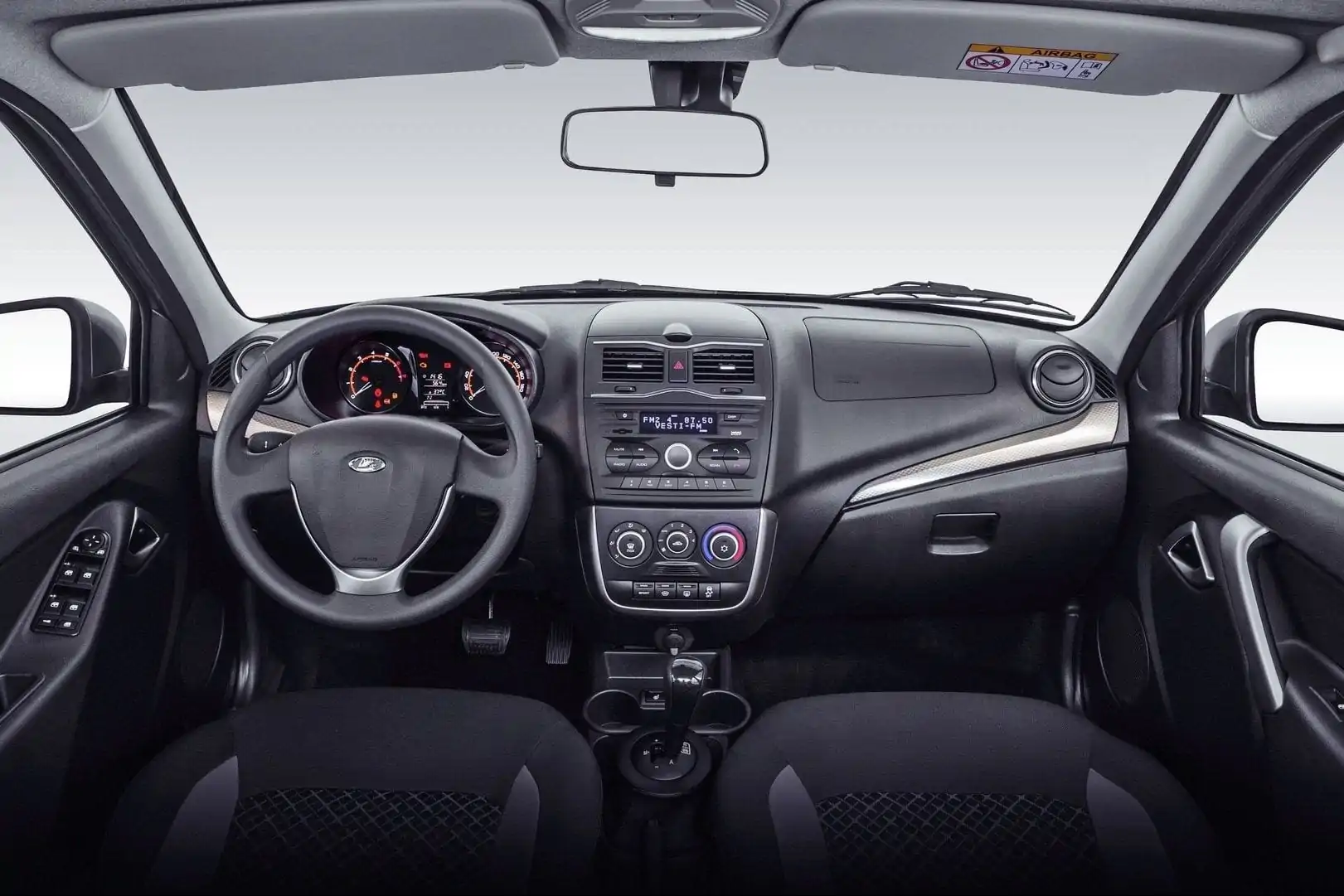Motorcycle brakes: learn how to bleed them
Content
Indeed, how many people do we hear complaining about the lack of power in their brakes and wanting to replace their usual hoses, calipers and even the master cylinder, before even asking questions about the main component of the l transmission? lever, or brake fluid? Therefore, we are going to replace your old fluid with a new one, in any case, including the purge.
How it works
A quick reminder of the previous article is helpful:
As we have seen, the action of the pads on the disc is caused by pressing the lever, the means of transmitting this force through the master cylinder is the brake fluid. It must have different mechanical and chemical properties in order to effectively transfer this force:
– It must be incompressible: indeed, if a fluid were used, even if it was slightly compressible, its volume would first decrease under the influence of force, before it is transferred to the caliper pistons, we would not brake or worse .. .
– It must be heat-resistant: the brakes get hot and heat up the fluid. A liquid that is heated can be brought to a boil, releasing vapors... which are compressed.
In addition to the quality of the brake fluid itself, the hydraulic circuit must not only be completely sealed, but also COMPLETELY free of air. It is clear that there should be no gas bubbles in it. Efficiency Keyword: INSUFFICIENCY!
Why replace your old brake fluid?
As we have seen, for a fluid to be effective, it must be incompressible. Unfortunately, this liquid is very fond of water and absorbs it over time. The problem is that the water boils at a temperature lower than that of the brakes and then gives off steam, which is compressed. This is what is called a "vapor lock", or the presence of gas at a temperature due to which braking disappears ...
The best way to avoid this is to replace the used fluid with a new one, let's be clear. NEW: Yes, a fluid that hasn't been used for a year in your garage has absorbed water and is therefore unusable. Do you need numbers? Specific? Serious ? Here are some of the standards that define the properties of various liquids.
At a humidity level close to 0, the boiling points of three different types of liquids are:
– DOT 3: approx. 220 ° C
– DOT4: almost 240°C
– DOT 5: over 250°C
With 1% water:
– DOT 3: approx. 170 ° C
– DOT4: less than 200°C
– DOT 5: approx. 230 ° C
With 3% water:
– DOT 3: approx. 130 ° C
– DOT4: less than 160°C
– DOT 5 barely 185 ° C
You should know that a statistical study carried out in our beautiful country on the basis of samples taken from cars shows that after two years the water content subsequently averages 3% ... Are you sure? I can already see you running to your dealer for new liquid !!!!
POINT
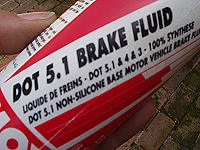 At this point in the explanation, here is the answer to the frequently asked question: "DOT 5, what's better than DOT 3?" “. Or again: "What does DOT stand for?" ”
At this point in the explanation, here is the answer to the frequently asked question: "DOT 5, what's better than DOT 3?" “. Or again: "What does DOT stand for?" ”
DOT is a classification of fluids under US federal law, the Federal Motor Vehicle Safety Standards (FMVSS), which defines three categories known as DOT 3, 4, and 5 (DOT: Department of Transportation).
The table below shows the main characteristics, the values indicated are the minimum values that must be observed to be included in a particular category:
| POINT 3 | POINT 4 | POINT 5 | |
| Dry boiling point (° C) | > 205 | > 230 | > 260 |
| Boiling temperature under 3% water (° C) | > 140 | > 155 | > 180 |
| Kinematic viscosity at – 40 °C (mm2/s) | > 1500 | > 1800 | > 900 |
We can clearly see that DOT5 fluid will withstand temperatures much better than DOT3, even if it has aged (this is not a reason to change it every 10 years ...).
In this case, you should be aware that some manufacturers (notably Brembo) prohibit the use of DOT5 for their equipment due to the chemical incompatibility of the seals. You can just as well be content with "good" DOT 4.
Purpose of the game
Before you start working with tools and new fluid, one more little reminder.
The hydraulic brake circuit consists of:
- a bank that serves as a reserve and compensates for the wear of the pads,
- master cylinder
– hose(s),
– caliper(s).
This track is full of "heights", places where small air bubbles can accumulate and remain there if we do not take measures to remove them. At these points we usually find either the bleeder screw(s) or the "banjo" type fittings used to connect the various components of the circuit (for example, between the master cylinder and the hose). A bleeder screw is simply a plug that closes when tightened and closes tightly; open when loosened.
Thus, the goal of the game is not only to replace the old brake fluid with a new one, but also to get rid of air bubbles present in the circuit at high points.
Let's go down to the garage on serious business ...
Cleaning
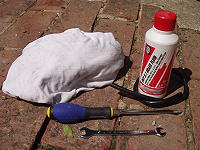 First of all, prepare the tools, namely:
First of all, prepare the tools, namely:
– 8 open end wrench (general) for loosening and tightening the bleed screws,
- a Phillips screwdriver (most often) to open the fluid reservoir cap,
- a small transparent tube for attaching to the drain screw fitting, which can be easily found, for example, in the aquarium section of a pet store,
– possibly a collar (Colson type) to be used to securely hold the pipe on the bleed screw,
- a container for collecting the used liquid into which the pipe will be immersed,
– a bottle of new liquid, of course,
- and rags!
Let's work ...
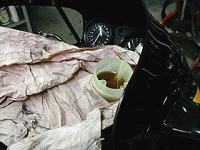 | 1 - First of all, wrap a rag around the brake fluid reservoir before opening it: in fact, the fluid likes to tarnish, even frankly washes paint from our cars, so they need to be protected. |
 | 2 - Open the lid of the jar and remove the seal (if it is deformed, return it to its original shape). |
 | 3 - Remove the cap located on the head of the bleeder screw and reinstall the pipe by immersing it in a container. Jar tip, pour some liquid on the bottom. Why ? The submerged pipe will fill as it purges. In the event of a "miss", fluid will enter the caliper, not air, thus avoiding the need to redo everything. |
| 4 - The very first part will be to drain some of the old fluid from the tank before adding new. WARNING ! There is a suction hole at the bottom of the tank: there must ALWAYS be liquid above this hole, otherwise air will enter the circuit. | |
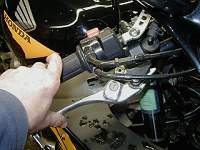 | 5 - Depress the brake lever and, while maintaining pressure, slightly open the bleed screw: fluid is expelled. Take the opportunity to check the presence or absence of air bubbles in the transparent tube. |
 | 6 - TIGHTEN the screw BEFORE the lever stops. |
| 7 - Repeat steps 5 and 6 until the level in the tank drops to a few millimeters above the suction port. | |
| 8 - Fill reservoir with new fluid and repeat steps 5 and 6 (adding new fluid regularly) until the drained fluid is NEW fluid and no air bubbles come out. | |
| 9 - Here the part located between the vessel and the bleed screw is filled with new liquid and no longer contains bubbles, it remains only to tighten the bleed screw correctly and remove the transparent tube. In the case of a dual disc brake system, the operation must of course be redone with a second caliper. | |
| 10 - At the end of the operation, top up the level correctly in the horizontal tank, replace the gasket and cap. |
to summarize
Complexity: Easy (1/5)
Attention Needed: Big ! Never joke about braking, and if in doubt, seek help from a competent person.
Duration: Good hour for all the brakes.
Do :
– As always, use good quality tools to avoid damaging the fuel cap screws or rounding off the sides of the bleed screw.
– use NEW brake fluid, not the one that was lying around in the garage, as we do not know when,
– well protect the painted parts of the motorcycle,
- take your time,
– get help in case of doubt,
– do not overtighten the drain screws (max. 1/4 turn after contact).
Where you are, bleed the rear brake and clean the discs and pads with a brake cleaner.
Not to do :
Do not follow the instructions in the "What to do" section!
This could have happened:
The Phillips tank lid fixing screw (s) “does not come out” (often in the case of a built-in can, aluminum). They are likely to jam, and there is a high risk of getting a misshapen impression if you insist, especially with a poor quality instrument.
Solution: Get a good quality screwdriver and the correct size that you will apply to the screw. Then openly tap the screwdriver with a hammer to "remove" the thread. Then try unscrewing it by pushing firmly on the screwdriver.
If you feel that the screw is bent, stop and talk to your mechanic: it's better to get the job done than to break everything. At the same time, insist that the screws are replaced with new ones, which you then remove immediately to lubricate them.
If the screw arrives, replace it at the end of bleeding with a new one, if possible with an internal hexagon, easier to disassemble (BTR), which you will lubricate before reassembling. Be careful not to tighten too much.
Thanks again to Stefan for his excellent work, his text and his photographs.
Additional information from Dominic:
“There are actually four categories of brake fluid according to the DOT specifications:
– POINT 3
– DOT 4: Most suitable for the vast majority of circuits. Commercial variants (DOT 4+, super, ultra,…) with higher boiling points. V
Top !!!
– DOT 5.1: (as shown on the container) produces more fluid to improve the reactivity of the ABS control systems.
These three categories are compatible.
– DOT 5: silicone-based product (used in Harley-Davidson, among others) that is incompatible with materials used in conventional circuits designed to work with the other three (I think this is where Brembo's remark came from).
I wanted to emphasize this because many products on the market do not distinguish between DOT 5 and 5.1, and a mistake can have dire consequences. Congratulations on a site that I regularly review. Some ads: in English, but made by bikers: www.shell.com/advance
MS Editor's Note: Indeed a well designed and very informative site worthy of a mention here regardless of any advertising connotation :)
